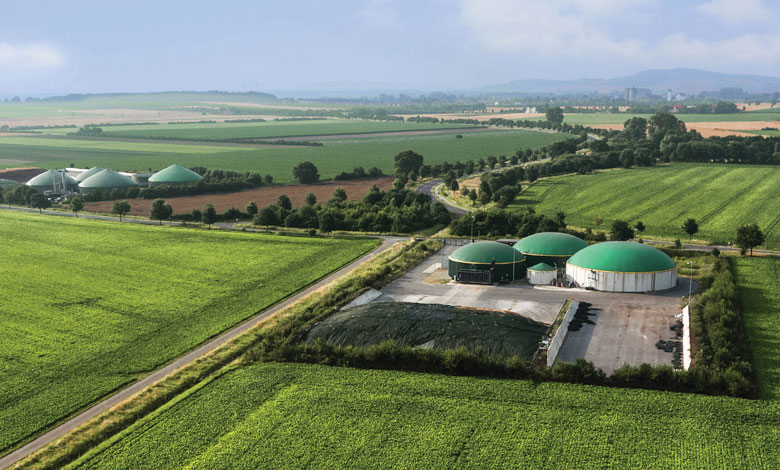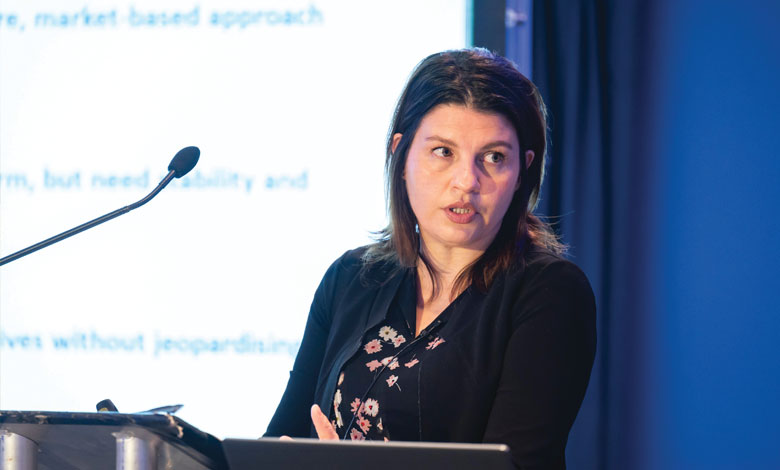
Ireland’s commitment to the energy agenda
14th October 2025
Powering Ireland’s energy transition with renewable gases
14th October 2025Unlocking European biogas and biomethane

The role of biogas and biomethane in the EU’s energy transition is evolving as Europe shifts towards system integration, market design, and policy coordination, research team leader at the Florence School of Regulation Marzia Sesini tells Energy Ireland.
“Over the past five years, European biomethane output has doubled and has made the transition from niche deployment to early-stage scaling,” says Sesini. “Biomethane is increasingly recognised as a strategic energy vector. We have seen this with the aim of achieving 35 billion cubic metres of methane (bcm) per year by 2030 set in REPowerEU.”
She explains that biomethane is being recognised as a strategic energy vector because it is domestic and dispatchable, and is compatible with the existing infrastructure. However, increases in biomethane production vary between member states, Sesini explains: “Some member states are driving the majority of production while others are still constrained by policy uncertainties.”
In parallel, global competition is intensifying with countries like the US, Brazil, and India rapidly scaling biomethane production. Sesini asserts: “The challenge is not just about scaling production; it is also increasingly one of market structure and policy design.”
She outlines that regulation varies between member states, creating friction for trade, investment, planning, and cross-border coordination. Sesini states: “The real question is whether the policy architecture and the market conditions are evolving quickly enough to support a system level growth across Europe.”
Comparative analysis
Sesini presents the results of her study titled, Unlocking European biogas and biomethane: Policy insights from comparative analysis, to demonstrate how Germany, Denmark, and Italy have attempted to create momentum for the biomethane market.
Sesini states that member states initiate the upscaling of biomethane production by implementing feed-in tariffs as they are “suited to the emergence of technologies”. However, she asserts that they are not suitable for long-term integration, which causes member states to transition to feed-in premiums which enable producers to sell to the market. Member states then transition to auctions after the feed in premium phase.
Germany rapidly scaled up biogas by implementing high feed-in tariffs to stimulate investment. However, investment eventually slowed due to reduced subsidies and a pivot to feed-in premiums and auctions.
Sesini asserts that Denmark demonstrates the potential of system integration. Denmark phased out feed-in tariffs gradually but maintained stable long-term support for grid injection. She says: “As a result, over 25 per cent of the country’s gas demand is now met using biomethane. Denmark also leads the EU in biomethane grid injection.”
Italy linked biomethane to transport decarbonisation and incentivised its “strong natural gas market”, Sesini says. The country provided signals of its intent to decarbonise with decrees put forward in 2018 and 2022 while introducing “targeted incentives for transport”. However, permitting delays and infrastructure bottlenecks impeded delivery.
“What this study showed is there is no ‘one-size-fits-all’ approach when it comes to market drivers for biomethane. Policy strategies are shaped by each country’s economic structure, energy priorities, and source availability,” states Sesini.
“The core challenge for the EU is to recognise the diversity while enabling strategic alignment and convergence through regulation and market coordination.”
Demand-side
Sesini asserts that demand-side instruments bridge the gap between policy ambition and deployment outcomes. She explains that a significant proportion of the policy framework for Europe’s biomethane market is in place, but adds that many national support schemes are domestically oriented. “This creates barriers to scaling and interoperability so there is a need for streamlined grid access,” she says.
Policies such as the Renewable Energy Directive III have strengthened the foundations for the guarantees of origin and sustainability certification, but most function as national reporting tools and not full market instruments that enable interoperability. This makes cross-border trading more complex. Sesini also traces the concern around traceability and industrial policy due to policies that “implicitly or unintentionally favour domestic biomethane over imports”.
She indicates that national autonomy must be balanced with market integration to avoid market distortion. Sesini adds: “To increase demand for biomethane and create an internal market, policymakers need to design policies that promote biomethane without disrupting competition.”
Priorities
Demand pool mechanisms must match the emphasis placed on production to unlock biomethane while scaling production and system integration. Sesini adds that certainty must be provided on offtake to reduce the risk of deployment being halted. The research team leader says this is what “translates a high-level policy target into bankable offtake agreements”. She insists that member states must align sustainability certification and guarantees of origin to enable the development of a cross-border market.
Sesini states that the ability to inject into the grid is crucial to achieving economic viability, but issues remain. Currently, there are high connection costs for producers connecting to the grid in some markets. There are also permitting issues and “a lack of clean financial support”.
Sesini explains that biomethane has moved from the margins to dispatch. In order to capitalise on its potential, member states must align their policies to achieve market integration.
Concluding, she states: “Now that the EU focus is moving towards competitiveness and decarbonisation, ensuring that biomethane is scalable, investable, and tradeable across the EU will require a combination of national autonomy and regulatory alignment to really create a coherent European biomethane system.”

